Deepest Winter. It can conjure up such romantic images such as walking over crisply frozen grass on a frosty winter’s morn’ with cute little robins and all that. In reality it can be a cold, windswept, frostbitten and somewhat arduous task to get the rods out for a few hours. My serious advice if you want to fish for Barbel at the darkest and coldest time of year is to choose your times wisely, the need to respond to weather conditions is paramount at this time of year above all others. Only the brave would dare venture out in freezing fog, snow and ice; similar to the weather we have endured over the recent Yuletide period. However, thanks to modern technical fabrics and clothing manufacturing technologies, these minor details and annoyances can be almost eliminated, enabling the intrepid angler to endure all sorts of extreme weather if he or she so desires. With the clothing I personally use, you would have to be dead to be cold, but it can and does have a way of creeping in and ruining your session, so little details like decent socks, thermals and of course the hat and gloves, all go a long way towards making it a bit bearable. Remember though, sodden winter clothing can act like a lead weight if you end up sliding in the water, so be aware. Flasks or tea kit are also a good idea, and even the dourest of days can be brightened up with a fresh cup of tea. Some of my most memorable winter socials have taken place under the profile brolly with the Coleman ticking over to keep the chill at bay and the tea on the boil. Another quick little tip of mine for a winter warmer is a couple of spoons of both coffee and hot chocolate in the flask, or if like Lewis you prefer the Horlicks these days you can always indulge yourself in something else. The option to bivvy up and have a bankside barbelling curry (not literally made from Barbel though) is always there, but again a bit carptroversial. One note on clothing and gear, get some decent thermal boots to go with your thermal socks. My wife, Rebecca, has better boots than I possess and never complains about trudging along frozen riverbanks carrying my bucket of mashed bread for me.

How has it fared for your humble narrator of late? Well, the Loddon certainly looks like it will soon have that tinge of green signalling that it is soon time for Chub. The festive period was fruitless for captures for myself and my friends, those that have been brave enough in the first place that is. A couple of trips spent drowning breadflake was biteless, but a lucky angler on the same stretch did land a 6lb 12oz chub which is a nice target to go for and would certainly do my PB by a couple of ounces. Dad has caught a shedload of pike so far this season but then again he always does on his day sessions flitting around.
So what sort of conditions am I looking for? Well, certainly no more of that bleeding snow. Not being a grumpy old git or anything, but I hate the snow. It’s cold, its no good for the rivers and its certainly not big or clever to bivvy up in the stuff for extended periods of time. I made myself ill one winter chasing pike on a large gravel pit, through all the snow, ice and other rubbish weather and have vowed not to put my health at risk again. The conditions that get me itching to get out and counting the hours during work if it’s a weekday, are those days that are in the low teens and where the overnight temperatures remain in the high singles to low doubles. This is usually caused by a damp south westerly blowing warmer air in from the Atlantic, and to be fair, is ideal fishing weather whatever you wish to angle for, especially carp. Give me a couple of days of this warmer weather though, slowly rising water levels due to a bit of warm rain entering the streams and its proper Sammy Heaven again. Looking at the current Metcheck long distance report, the mid January mild flash in the pan looks to be a couple of weeks away now, and every season for me it seems to produce the goods in either a multiple catch or a rather large fish. We shall see. One of my most memorable sessions occurred during such a time, when a brace of Barbel totalling over 26lb in weight graced my net. It was a mid January week night, with the aforementioned set of weather conditions; mild, overcast, overnight temperature of a tropical 10 degrees Celcius. I settled into a favoured deep water swim that always seemed to yield a fish or two when the going was tough, and that winter it certainly had been on the rivers for me. Several large fish were heard rolling in the gloom during the first couple of hours and a chub later on in the session was the first of a trio of savage takes, resulting in a fish a chuck for a short feeding spell that saw both Barbel in the net at the same time. Luckily, Dan was available to help out and do the honours on what definitely was a night where all the planets lined up for me or something along those lines. Although a large slice of luck was upon my side, it was the end result of a couple of years fishing, learning and baiting on this particular section of river.

Features that I look for are pretty much the same areas I would look in summer, preferring to locate the deeper holes below shallow runs. It’s a classic but they really are the places to start looking or at least spend half an hour fishing them. Another obvious choice is snags and raft feature swims, another classic and for a very good reason. Barbel love the safety of snags and winter Barbel can spend months holed up both in and under sets of snags, dead trees, submerged bushes, vicious underhangs and all manner of line mashing subaqua nastiness that can be so tempting a home to a fish yet so brutal a place to angle for them. Looking very closely with polarising glasses when the water is low and clear can see you stumbling upon almost every fish in the stretch residing in a set of snags, and the wary angler will reap the rewards if fishing sensibly and safely. Although you may find them, fishing for them may be another proposition, and either careful baiting to draw them out, or stout tackle to go in for them must be sensibly deployed. I described my up and downstream style last month, where new upstream obstructions and snags are capitalised upon with two rods in previously single rod spots. One overall observation in my experience is that they are not far away from where you would find them in summer, maybe that next deep bit down or under that set of branches below where you found them last. The beauty of the majority of modern Barbel methods is that you can just drop a baited rig in and have a try. You can even stay in the same swim all night if that floats your boat. Sometimes you get ‘the feeling’ encouraging you to sit in a swim for a few hours and you just know the persistence will pay off, some call it ‘boring the fish out’ to others it’s good angling.

Baits are as much a personal choice in the winter as they are during the warmer months. A large food item giving off a scent trail fished during darkness or high water will always eventually get a response if Barbel are near and in a feeding mood, so there is little really to change in the way you would fish for most of the season. It is always good practise to scale down, as cyprinids, especially in stillwaters, undoubtedly require less in the way of nutrition during the colder months. One school of thought is that river fish are constantly expending energy to fight the current, so will have a requirement for feeding that should hopefully occur whilst an angler is presenting a suitable dinner for them. They might only be up for a small morsel at a time, so it will pay to be prepared to offer a smaller food item than on say a ‘standard’ boilie or pellet rod fished during the summer. My boilie approach for the hours of darkness is to use paste covered boilies as I do all year round, but trim them down in size a bit to encourage that all important bite. My usual savoury boiled barbel treats have remained the same, they work all year round and I have no need to change them. As always, a lot of smell is incorporated into and around the PVA bags to provide extra attraction, rolling them in dry dip afterwards to get a bit more on there. Having recently obtained some excellent books as Yuletide gifts, I have been bolstering my understanding of Amino Acids and the attractant properties they have when waterborne, and the possible reaction they provoke when detected by a Barbels nostrils. Admittedly a lot of the work and research into this topic has been purely observational on the part of anglers, with regards to the behaviour of Barbel when exposed to these compounds in their natural habitat. I know studies in the form of tank tests have been done regarding carp and their responses to various nutritional stimuli, have any been done for Barbel? Perhaps I should take my own advice and look it up! Either way, I have total confidence in an amino boosted bait and have done since the very early 90’s when I was shown Minamino Sport from Boots and rolled a lot of my own birdfood mix whilst serving my carping apprenticeship. Used at a dose of 30ml to 6 eggs with my hookbaits glugged in the dark liquid for extra oomph, I had personal record seasons of numbers of fish captured year on year. I don’t know why I dropped it from my carp baits in the end, I think the advent of readily available rolled freezer baits that maybe didn’t include it and my gradual leaning towards fishmeals and regular sense appeal for my home rolled fish food saw it pushed to the back of the bait additive cupboard for a few years. The discovery of Aminol Liquid however reminded me of how good amino acid compound type liquids are for an attractor and since I began my Barbel fishing I have included it either in my boilies or as part of the glugs and jollops as I totally believe in the benefits of a flavour trail and the effect a flavour trail has on attracting fish. That and GLM.
No more than a thumbnail sized hookbait was the advice I was once given, and that has always stood me in good stead as a literal rule of thumb. The fact of the matter is, fish may feed less in the winter and require less in the way of physical amounts of food to attract them, but given the right conditions and you could find yourself attached to a proper monster and you don’t need any aspect of your tackle to let you down. When scaling down in hooks to match these smaller baits, I rarely go lower than a size 12 Covert Wide Gape Gardner Talon Tip when using the 1 ¾’s. Being constructed from a heavy gauge wire they go in right up to the eye and stay in, even when the corks are creaking and the braid is singing in the rod rings.
For the caster terminal rigs, I remain with the 15lb Disruption coupled with the size 12 Covert Talon Tips. I may drop the hooklink to a soft Trickster braid if required, but have found the 15lb stuff to do the job fine, which goes back to my earlier comment about being potentially undergunned. Having played around with the mono I always tend to go back to the braid, its what I’m confident in. The casters are mounted by dabbing them with superglue and sticking them to the hair, much easier if it’s a braided hair. A fake Enterprise caster can also be added to possibly negate some of the weight of the hook, but I don’t think it matters. I used to hair rig the fake caster and glue real casters around it, but these days prefer to glue them all to the hair and save fiddling about threading a tiny bit of plastic. My friend The Doctor will probably read that last bit in horror, he has already threatened to stick my eyes to a tree if he catches me using glue anywhere near a hookbait. Some like it, some don’t, whatever works I suppose and it certainly hasn’t caused me any concern although I might catch more if I thread them onto individual hairs. Hmmm.
Maggots are easily presented in that finest of maggot depositing devices, the swimfeeder. Available in several guises, my personal preference are for the type as demonstrated by Darran Goulder in his Tench articles, the super sci-fi streamlined ones! The payload held with these little plastic angels is plenty for a 20 minute plop into a likely looking spot. Fished with the ever reliable mag-aligner, again using the Enterprise grubs, size 12 Covert Talon Tips or size 10 Covert Muggas depending on how many maggots I feel like offering them. Another advantage is that it eliminates the need to tie bags of maggots, which although not necessarily time consuming or that expensive, can be a bit of a burden when wandering about the bank looking for likely spots. Plus you can rebait and recast quicker than if you have to mess about tying bags to lead loops or whatever your preferred method of attaching them is. This is where the maggot clips as shown a couple of months ago are really useful if you intent to pursue the mag-aligner purist route and remain faithful to the PVA. If I feel that I am really scratching for a bite from anything, even a suicidal roach or chub to get the ball rolling, I will drop down to a size 14 spade on a 6lb or 8lb braided hooklink. Again, think big fish and know that a 4lb hooklinks may possibly let you down. Nigel’s piece on maggots last month got me thinking, and it wasn’t long before I tied up a couple of his anti roll bar maggot rigs as demonstrated in the article, I have yet to try them in anger but they look good in the test tank, lets hope the Barbel think so too.

One word of caution regarding the use of tiny baits such as maggots and casters, the Barbel will take them with some confidence, especially if a long hooklink is employed, and this may lead to deep hooking, so take this into consideration and pack a disgorger. For this reason I tend to use a slightly longer hair than normal, and will increase this length if required as and when deep hooking occurs. Once whilst spending a pleasant evening fishing with Lewis, he caught the tiniest Barbel I had ever seen on feeder fished maggots, which was hooked well back and required the disgorger and plenty of recuperation time before it swam off. I tend not to have that problem with size 4’s though, ‘gudgeon stoppers’ I call them. All joking aside, you have to look after the little ones, and I get as much if not more pleasure in seeing the smaller specimens than the larger fish, saying that an 18 pounder wouldn’t go amiss. My point being that a big fish is a likely to get deep hooked by a tiny bait presented on a long hooklink as a small fish would.
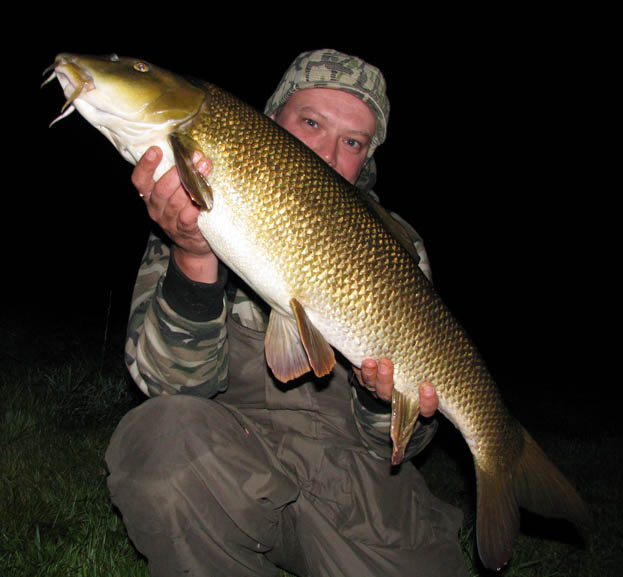
There are a few other technical items that will help you make the decision to stay that extra hour or not, clothing aside, the most useful of which is the digital thermometer. It is a generally accepted belief that an increase in temperature, especially whilst observed over the duration on the trip, can signal a possible feeding time and success if you are stationed above a pod of fish prepared to feed. Several numbers or threshold points are bandied about with the other accepted belief that a rising temperature of 42f going up to say 44f is preferable to a drop from maybe 46f to 44f. There are literally volumes already written around the preferred feeding temperatures that will affect a feeding switch on from the Barbel’s part, but in my experience you stand a better chance of catching one if you actually go fishing regardless of the fact the temperature may be regarded as low, than by writing off the day based around a few digits on a screen. You can always throw some breadflake about for chub or go trotting for dace, unless it’s dark then I would opt for lobworms or cheesepaste on one rod for the chub with a ‘sleeper’ barbel rod dropped in the margin. At least you’re out and about. Many anglers use the ‘K type thermocouple drop a lead into the waters edge’ variety of thermometers, but being the technophile I can sometimes be, I have recently been using an infra red lazer guided thermometer available from places like RS, which means I can simply pull up on the bridge for example at St Pat’s or at Whistley Mill, zap the waters surface and decide whether to turn around or not.

Invariably though, I will always stay for a while seeing as I have made the effort in the first place and have never written off a trip due to a water temperature reading. Being of an inquisitive nature, the use of this bit of kit has spurred me to investigate the existence and possible effect of temperature fluctuations between the surface water to the river bed temperature, as already described last month, just in case my accepted belief influenced assumptions about the surface temperature and possible feeding spell correlation are flawed. I just need a longer thermocouple lead or 10 and a length of weighted conduit. Another more easily attainable set of data relevant to angling can be found on the web. The online weather reports or a home weather station always play a part in deciding where and what to fish for, so understanding and observation of these resources is invaluable. There are plenty to choose from, my favourite being Metcheck which I cross reference to the Met Office website. Another one shown me by an amateur flying enthusiast is Weatherjack which shows extremely local weather and wind patterns predictions. Big pit carp anglers would be wise to investigate the possible benefits of such information as accurately getting ahead of any variation in wind direction has both put me on and caught me fish numerous times.
So to sum up, wrap up warm, drop your bait and hook sizes a bit, be prepared to either search for them a lot, sit it out and wait for them when the time is right, or a combination of the two. I hope you may have found some inspiration to get out there in the frost and snow and give it a go.
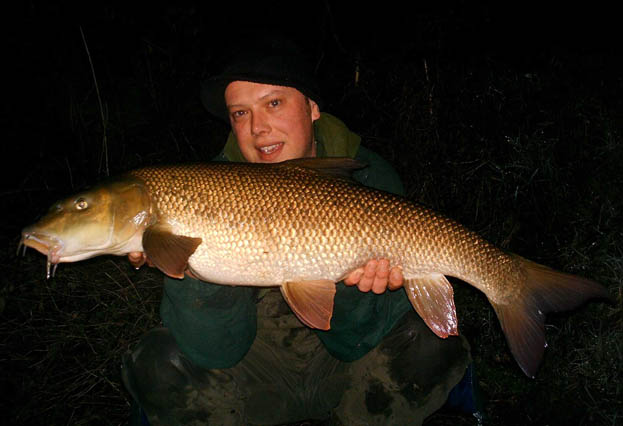




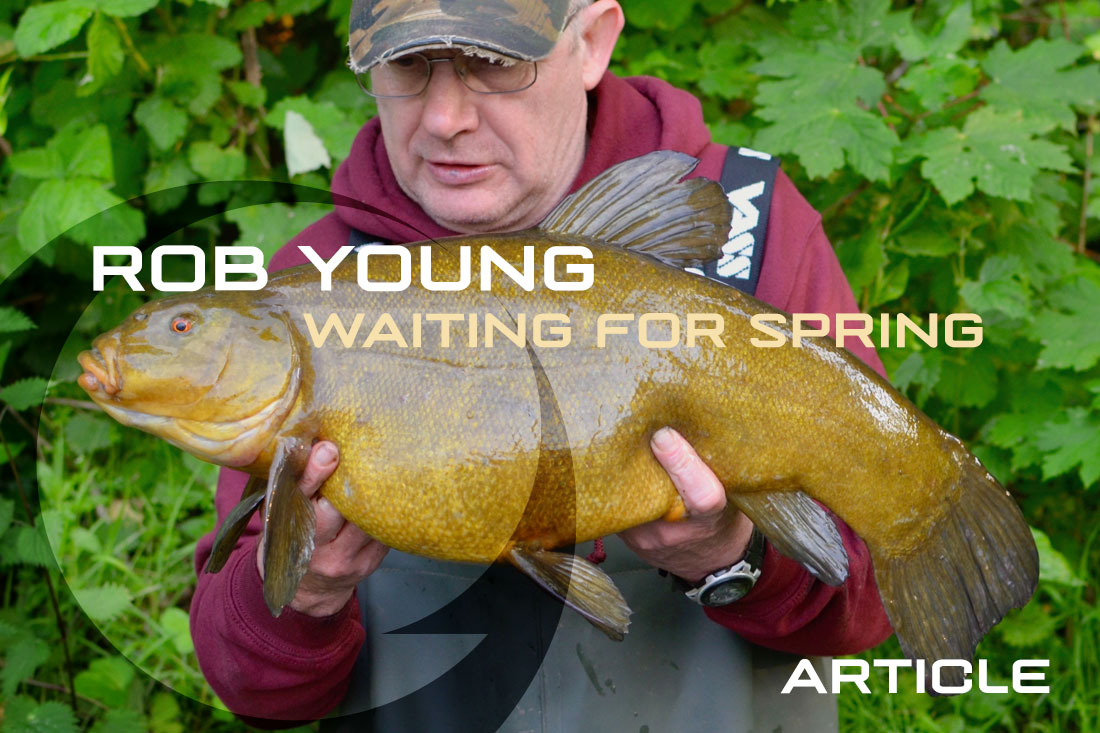
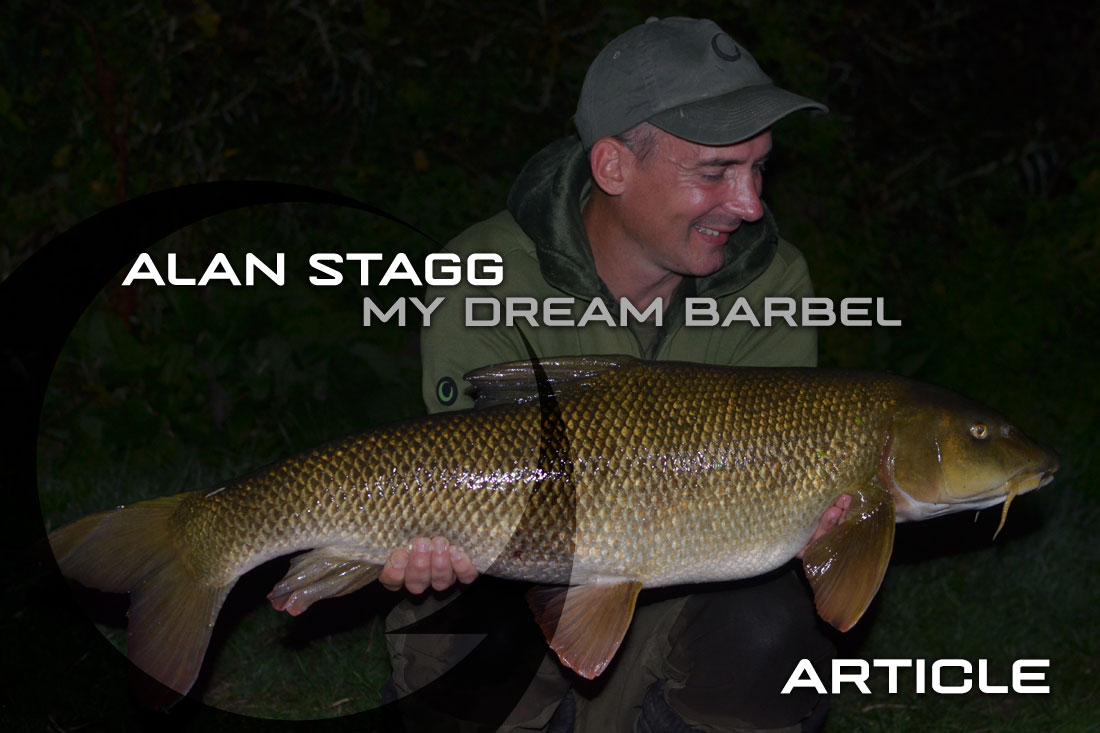
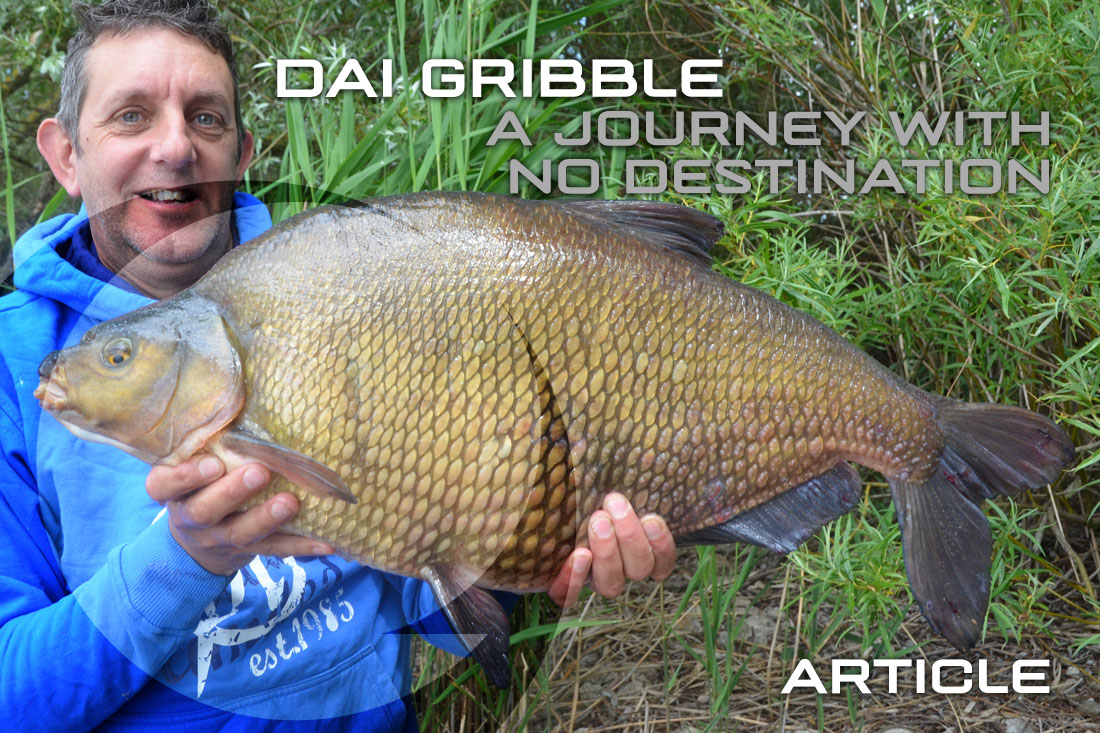
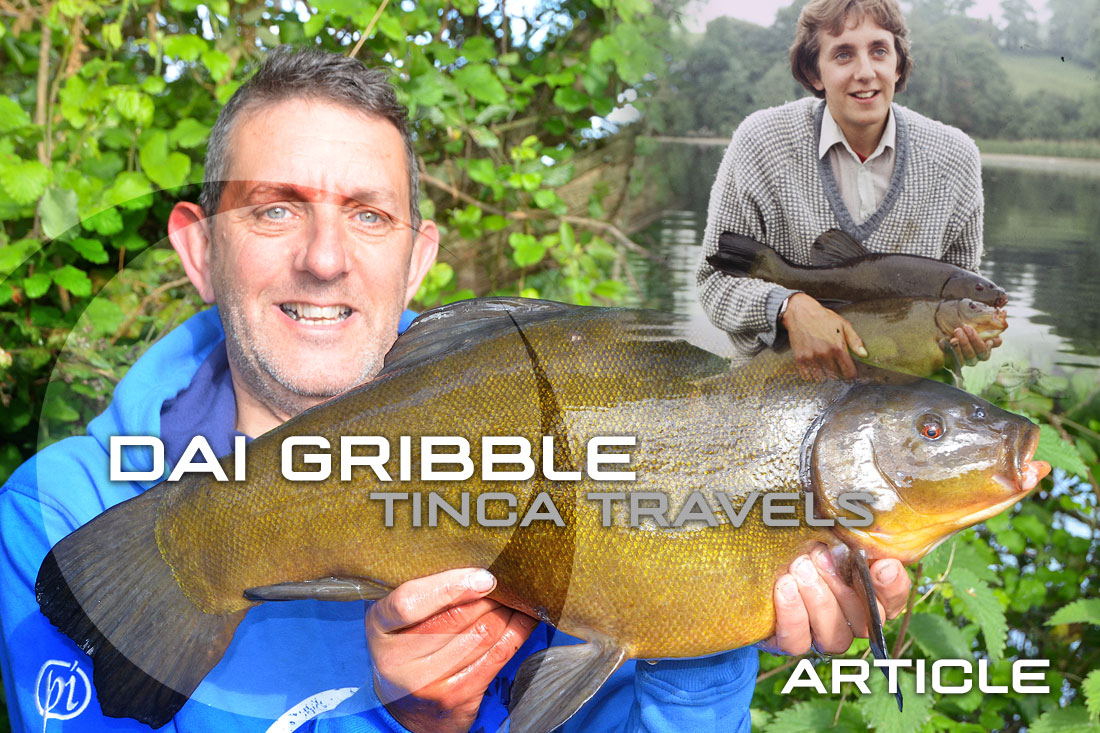

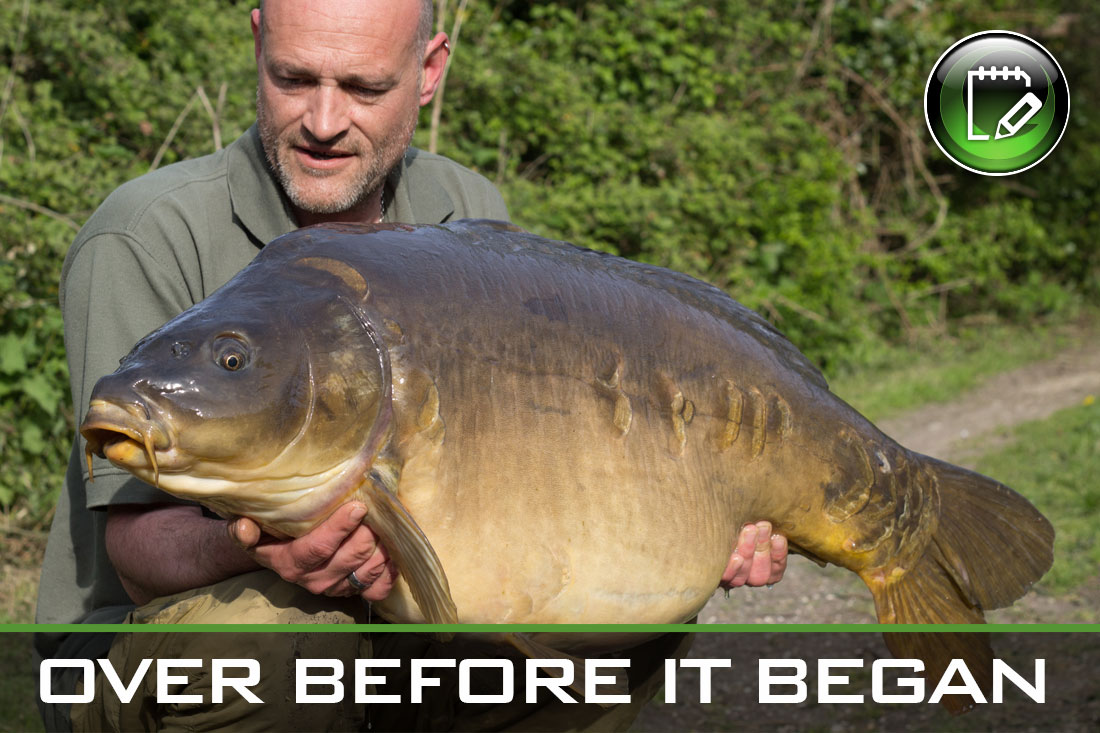
Leave A Comment